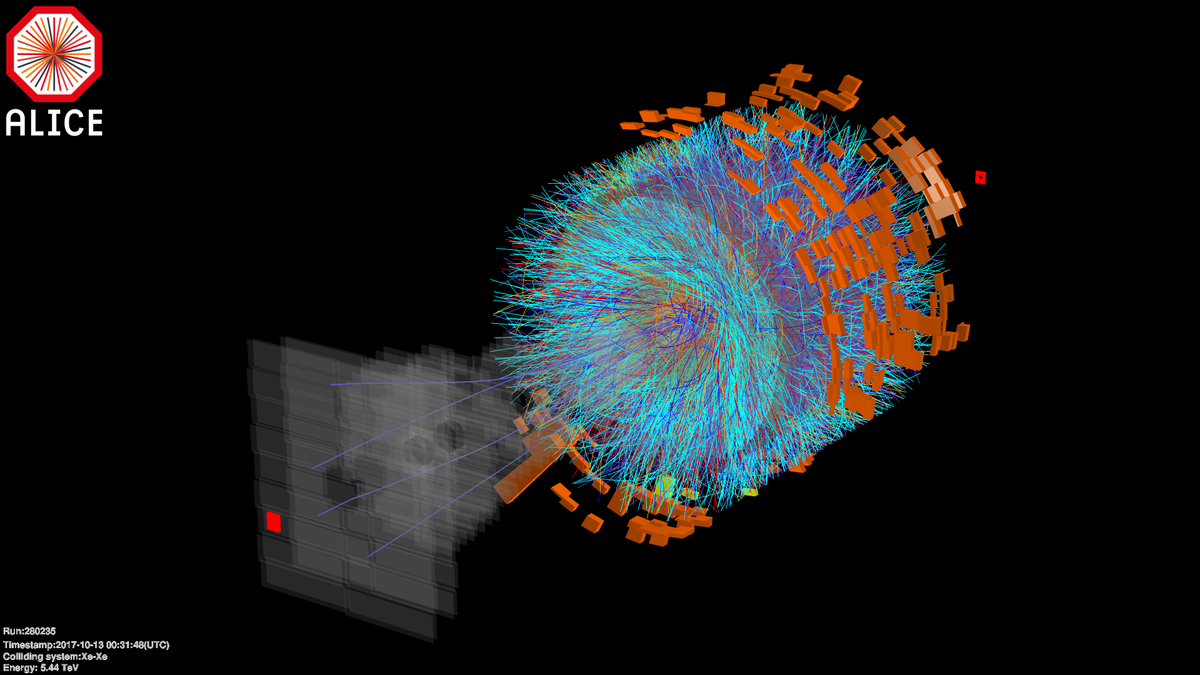A successful heavy-ion campaign for ALICE
The LHC stopped its 2017 operation at the beginning of December and the experiments have already started their plan of intervention for the end-of-year break. The last two weeks of data taking have been particularly important for ALICE, since a special run requested by our experiment took place. Proton-proton collisions with a centre-of-mass energy of 5T eV were delivered to allow ALICE and the other LHC experiments to take data that will be used as a reference for the measurements performed in Pb-Pb and p-Pb systems at identical energy. The ALICE objective was to take 870 million minimum bias events. As it had been computed, in order to accomplish this result 160 hours of data taking were needed, to which the time for the setup of the accelerator and the normal intervals between fills were added. Altogether, this accounts for 11 days of run, which had been granted to ALICE.

Even though the goal set was quite ambitious, it was not only reached, but even exceeded. The LHC exhibited really good performance, the setup time was shorter than expected and our experiment ran with very high efficiency (about 97%). Thanks to shorter setting up time and intervals between fills, ALICE could take data for 180 hours, over which it recorded 986 million minimum bias events (more than 100 million extra events), and the run could even be stopped one day in advance.
In parallel to minimum bias events, triggered data were also taken with requirements on the muon detectors and the calorimeter. Reaching good statistics for this kind of events was particularly challenging, since the interaction rate was set low (50 KHz in average) to have high quality minimum bias data.
This excellent special run concluded the very successful data-taking campaign of 2017. ALICE collected data of pp collisions at 13 TeV in the centre of mass over many months, storing 866 million minimum bias events in nominal conditions and 145 million ones with a lower solenoid magnetic field (0.2 T instead of 0.5 T). A reduced magnetic field allows detecting, and thus studying, particles of low transverse momentum.
A good amount of high multiplicity events, triggered with the V0 detector, was also gathered, as well as data samples taken with specific trigger requirements on the calorimeters, gammas, jets, muons, coincidence muons-calorimeters, and diffractive events.
In October, ALICE had also the possibility to collect data of xenon-xenon interactions, exceptionally delivered to the LHC experiments along a 6-hour run. During this fill, 1.7 million events were recorded, which are now being analysed and the results discussed in the internal physics meetings.
At the moment, three months of technical stop and minor interventions on the instrumentation lies ahead, while the commissioning and then the physics data taking will restart in March 2018.
The article will appear in December's issue of ALICE Matters.
